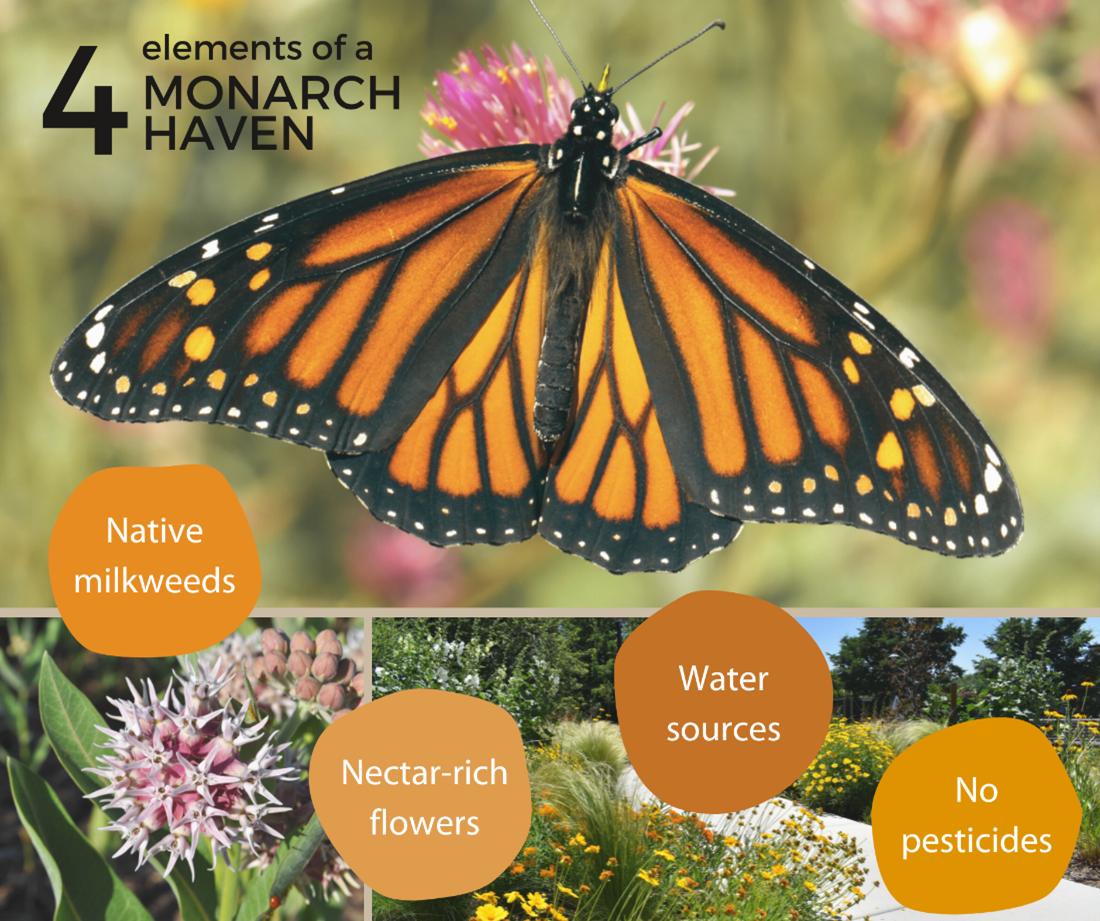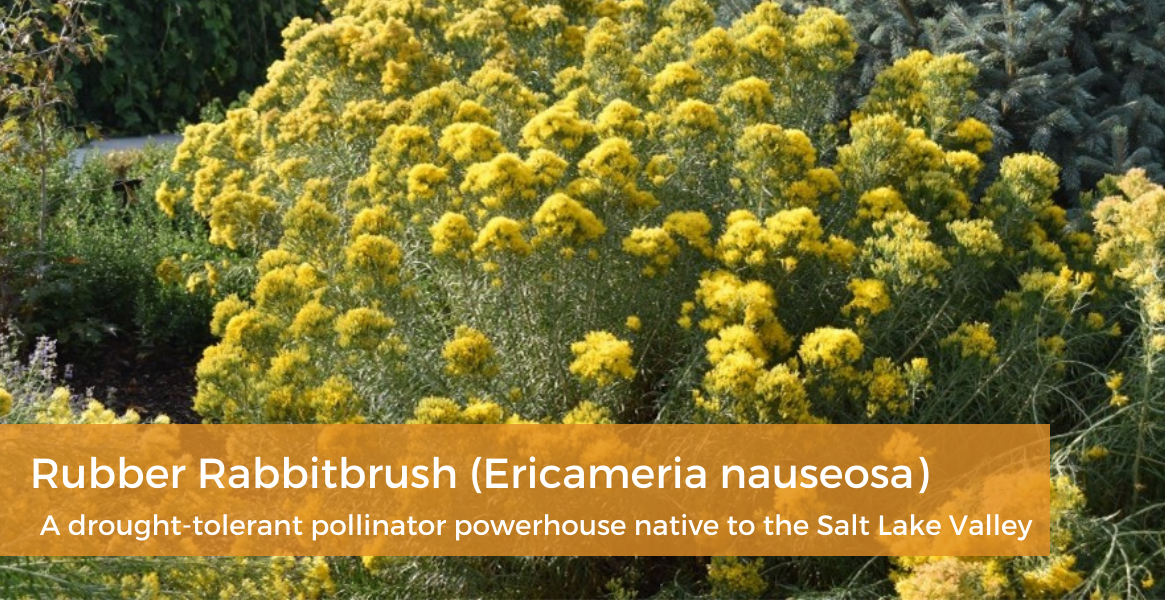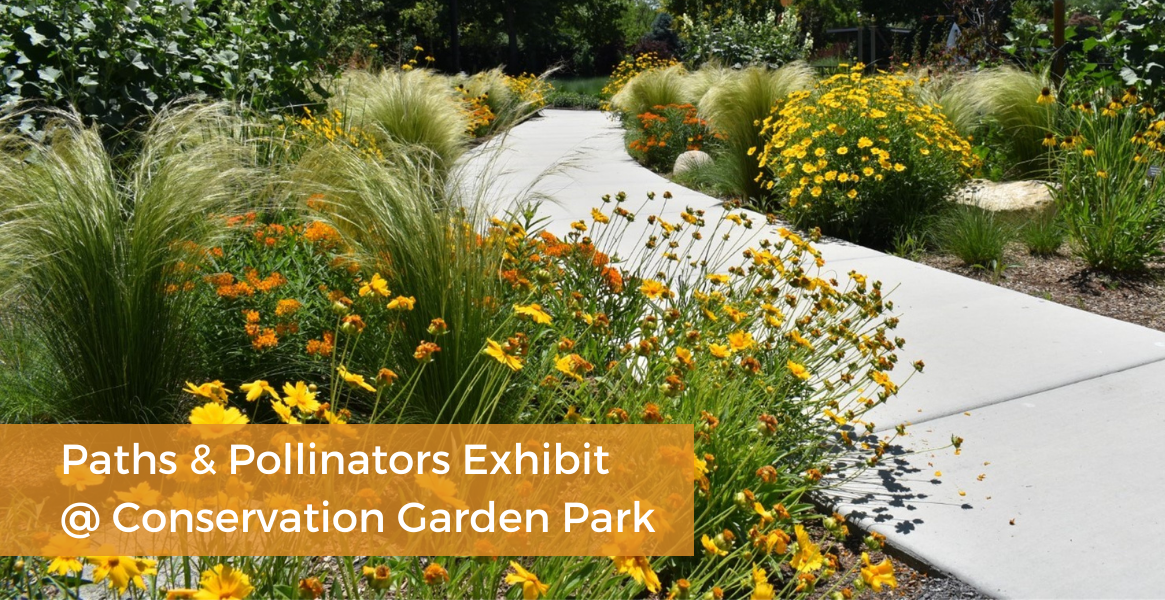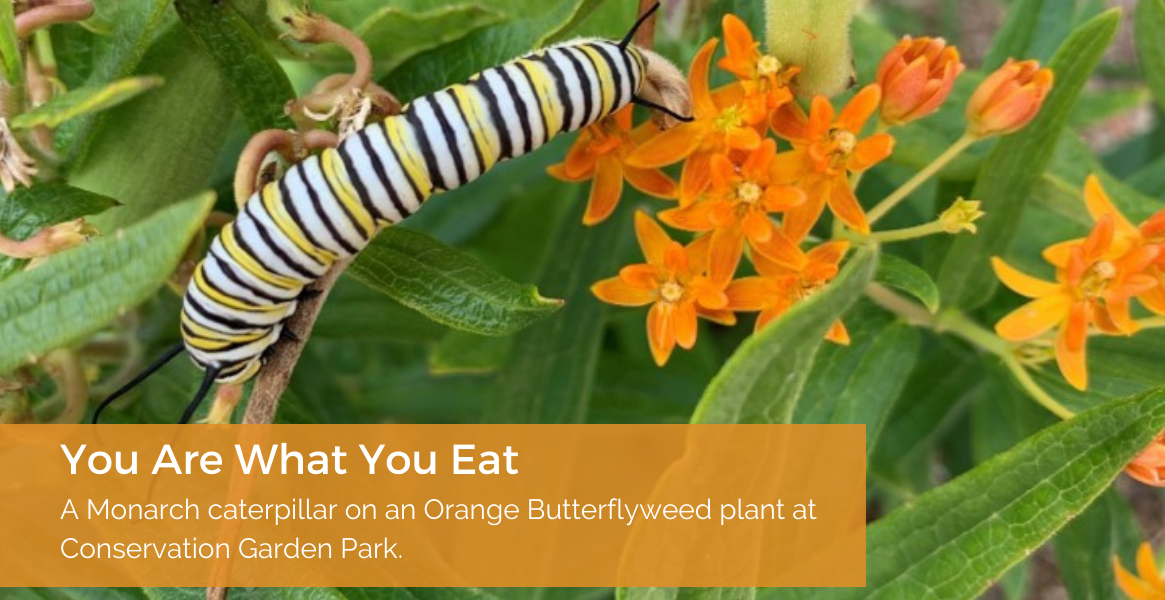
4 Elements of a Monarch Haven
-
On July 21,2022, migratory monarch butterflies were added to the IUCN Red List of Threatened Species as Endangered. The western population of migratory Monarch butterfly is at greatest risk, having declined by 99.9%since the 1980s, mostly due to habitat loss and the gradual disappearance of their host plant, milkweed.
You can help protect this iconic species by providing habitat in your own backyard! Removing lawn and replacing it with water-wise, pollinator-friendly plants is a great way to save water and support wildlife at the same time.
Here are 4 ways to create a monarch haven in Utah.
-

-
1. Plant Native Milkweeds
The best way to support monarchs is by planting milkweed, their host plant. Milkweed plants are in the Asclepias genus and serve as an essential food source for monarch caterpillars. The flowers also provide nectar for adult butterflies.
There are several milkweeds native to Utah. Some of the easiest to find are showy milkweed (Asclepias speciosa), which has round, spiky pink blooms, and orange butterfly weed (Asclepias tuberosa), which has flat clusters of bright orange flowers. Both are drought tolerant, grow very well here at Conservation Garden Park, and would be an attractive addition to any landscape.
Stay away from non-native milkweeds such as tropical milkweed (Asclepias curassavica)which may harbor parasites that kill monarchs.
-

-
2. Plant Nectar-Rich Flowers
Nectar-rich flowers are essential for supporting adult populations of monarchs. Traditional yards made up of entirely turf grass don’t provide food and shelter for wildlife, whereas replacing lawn with planting beds filled with a variety of perennials creates a beautiful, water-wise, and monarch-friendly landscape.
Try to choose a selection of plants that bloom at different times of year, so the butterflies have food all season long. Nectar-rich flowers also support other pollinators such as native solitary bees, which are similarly affected by habitat loss.
Some good drought-tolerant choices for our area include rabbitbrush, sulfur-flowered buckwheat, blazing star, blanket flower, and sunflower. Check out the Xerces Society’s lists of monarch nectar plants for the Great Basin and Rocky Mountains for more great options. To find pollinator-friendly landscape plants that have been tested at Conservation Garden Park, take a look at our own Plant Database.
If you are interested in removing lawn and making your yard more pollinator-friendly, consider joining our Localscapes rebate program! Localscapes helps you design your dream yard in a way that works in Utah’s climate and provides a cash rebate for water savings. Many of our participants install pollinator gardens, which are beautiful and water-wise alternatives to lawn.
-

-

-
3. Provide Water Sources
Monarchs need places to cool off and take a drink during the hot summer. There are a variety of ways to provide drinking water for wildlife without wasting lots of water. Anything from simple birdbaths and dishes of water to small bubbler fountains with little surface area (as opposed to tall, splashing fountains)can go a long way. If you make space for it by removing lawn, you might even save water!
Try to choose features with lots of texture, or add pebbles so the butterflies have a place to land, and make sure the water doesn’t get stagnant. You’ll see birds, bees, and other visitors taking advantage of the refreshment, too!
-

-
4. Avoid Using Pesticides
Insecticides such as neonicotinoids harm monarchs and other pollinators just as much as the pests you’re trying to get rid of. If an infestation is minor and not killing plants, consider leaving it – sometimes natural predators like ladybugs will come along and take care of the problem for you.
When necessary, use focused applications of pollinator-friendly controls, like physical removal, soap sprays or diatomaceous earth. Save insecticides as a last resort, and always read the label before use and follow instructions carefully. The EPA has published a list of reduced-risk pesticides that are safer for humans, nontarget organisms, and the environment. If you spray any kind of pesticide on your lawn, make sure you’re not overwatering, which can cause toxic runoff into other areas. Review our watering guide for specific recommendations.
-

-
Overall, removing lawn and planting native plants in your yard is one of the best things you can do to support Utah’s wildlife and water cycles. For more information on protecting monarchs, check out the excellent webinar “Saving the Monarchy: One Milkweed at a Time” on the Conservation Garden Park’s Youtube channel. You can also come visit Conservation Garden Park in person to see these principles in action!
-


